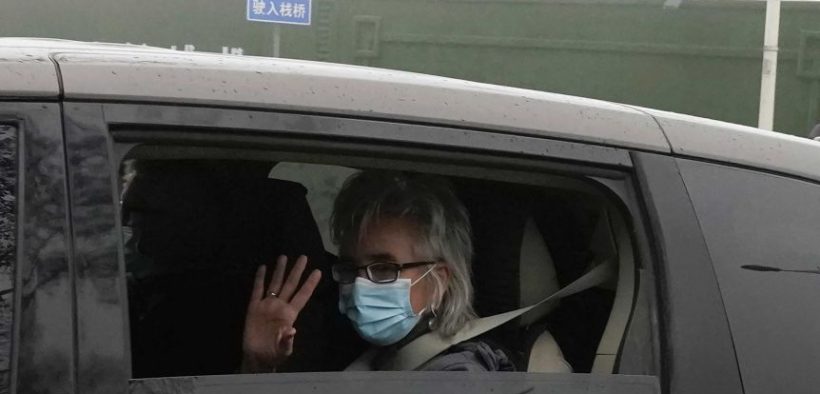WHO team investigating coronavirus in China visits Hubei Centre for Disease Control and Prevention

The WHO has sought to manage expectations for the team’s mission in China.(AP: Ng Han Guan)
A World Health Organization-led team investigating the origins of the COVID-19 pandemic has visited the Centre for Disease Control and Prevention in China’s central region of Hubei, where the outbreak emerged in late 2019.
Key points:
- No full itinerary for the group’s field work has been announced
- Beijing has sought to cast doubt on the origins of the coronavirus
- China has largely curbed domestic transmissions through testing and contact tracing
The group of independent experts spent about 4.5 hours on its longest site visit since completing two weeks of quarantine last Thursday, and did not speak to waiting journalists.
The WHO, which has sought to manage expectations for the mission, said its members would be limited to visits organised by their Chinese hosts and would have no contact with community members because of health curbs.
The group has so far also visited hospitals where early cases were detected, markets, and an exhibition on the battle with the outbreak in the provincial capital of Wuhan.
Yanzhong Huang, senior fellow with the Council of Foreign Relations in Washington, said two weeks in the field was not much time for the experts.
“I don’t think they have the time to get any conclusive results,” he said.
“It is more like communication and information exchange.
Evidence gathered could take years to process

Beijing has sought to cast doubt on the notion the coronavirus originated in China, pointing to imported frozen food as a conduit.
That hypothesis emerged again on Sunday in the Global Times tabloid run by the ruling Communist Party’s People’s Daily.
On Sunday, the experts visited the Huanan seafood market linked to initial infections, and the Baishazhou wholesale food market, where a loudspeaker repeatedly announced the sale of imported cold chain products was banned.

The evidence the team assembles will add to what is expected to be a years-long quest for answers.
Pinning down an outbreak’s animal reservoir requires massive amounts of research including taking animal samples, genetic analysis and epidemiological studies.
It could take years of research, including taking animal samples, genetic analysis and epidemiological studies.
Mask wearing in public is observed almost universally and lockdowns are routinely imposed on communities and even entire cities where cases are detected.
Despite that, China recorded more than 2,000 new domestic cases of COVID-19 in January, the highest monthly total since the final phase of the initial outbreak in Wuhan last March.
Schools have gone online and travel has been drastically cut during this month’s Lunar New Year holiday, with the Government offering incentives for people to stay put during the most important time for family gatherings across the vast nation.
Reuters/AP











